PPE is equipment put on by a worker to minimise exposure to specific hazards. E.g., PPE includes respirators, aprons, gloves, fall protection, and full-body suits, in addition to eye, foot, and head protection. Using PPE is only the element in a complete hazard control program that uses a range of strategies to preserve a safe, healthy, and balanced atmosphere. PPE doesn't reduce the hazard itself, nor does it ensure total or long-term protection.
Hazards exist at every workplace, so strategies to safeguard workers are most important. Follow the "Hierarchy of Controls" including the elimination, substitution, engineering control, administrative control, Using PPE of hazards at their source. Several approaches are readily available, and those most appropriate to the detailed scenario should be used.
Controls are placed at the followings:
-
From the source (where the hazard "comes from").
-
With the path (where the hazard "travels").
-
At the workers. (Being allowed to travel).
Controlling hazardous substances at their source is the first choice because this method will eliminate them altogether or isolate them from the worker. This approach may require substituting a material with non-hazardous ones, isolating hazards, ventilation, adding safety features to existing equipment, redesigning the work processes, or purchasing new equipment. Administrative controls such as work practices, education/training, and housekeeping are also ways to control hazards.
When the hazard cannot be removed or controlled adequately, then lastly, personal protective equipment (PPE) may be used.
Following are the common Personal Protective Equipment used in the industries.

Safety for Head:
A helmet or Hard hat is the best protection and can protect against head injuries from any kind of dropping objects. Select a durable headgear that is adapted to the working conditions. Nowadays you can find many elegant styles as well as you can select extra options such as a flexible indoor harness and also comfy,
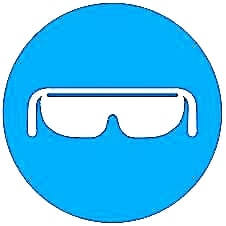
Eyes Protection:
The eyes are the most complicated as well as vulnerable parts of our body. Daily, more than 600 individuals worldwide endure eye injuries during their work. Thanks to a good set of safety glasses, these injuries could be avoided. Do you come into contact with brilliant light or infrared radiation? Welding safety glasses or a shield uses perfect protection.

Hearing protection:
Do you operate in an environment with high sound levels? In this scenario, it is extremely crucial to think about hearing protection. Earplugs are very comfortable, yet earmuffs are convenient on the job flooring as you can promptly put these on or take them off.
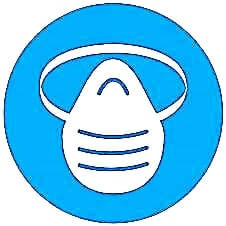
Maintain the respirator:
Wearing a mask at the workplace is no luxury, definitely not when entering into contact with hazardous materials. 15% of the staff members within the industry inhale vapours, inhale, smoke, or dust while doing their task. Dirt masks use protection versus dust and also other harmful bits. Utilise a full-face mask if the products are absolutely toxic. This sticks snugly to the face to protect the nose and also the mouth against unsafe pollution.
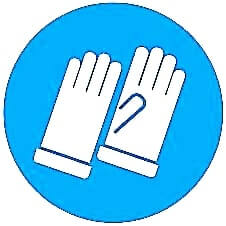
Protect your hand with the right gloves:
Hands and fingers are often injured in the workplace, so it is essential to protect them adequately. Depending on the work nature, you can choose the gloves for the following applications:
- protection against the vibrations
- protection against the cuts by sharp materials
- protection against the cold or heat
- protection against the bacteriological risks
- protection against the splashes from diluted chemicals.
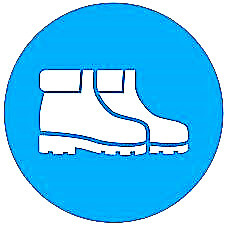
Feet Protection:
Your feet need solid protection while working at the worksite to ensure the safety of this vital body part. Safety shoes (type Sb, S1, S2, or S3) and boots (type S4 or S5) are ideal for protecting the feet against heavyweights. An antiskid sole is functional when working in a damp environment, definitely if you know that 16,2% of all industrial accidents are caused by tripping or sliding. Shoe claws are recommended on slippery surfaces, such as snow and ice. Special socks can provide extra comfort.
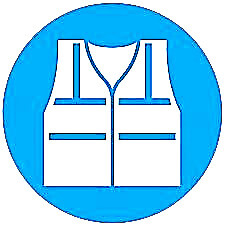
Right clothing:
Preventing accidents is crucial in your workplace. Good visibility at work is essential at night, which is done with a high-visibility jacket. Body Covering overall is beneficial for improved visibility, chemical resistance, fire resistance, static control, anti-contamination, etc. Overall, an Apron, made of a substantial fabric, can also help prevent accidents, e.g., Risk of entanglement prevention, Hit by the moving object due to low visibility, etc.
Following OSHA PPE Standard needs to know to comply and ensure positive health and safety culture.
OSHA 1910.132(a)
Protective equipment, including personal protective equipment for eyes, face, head, and extremities, protective clothing, respiratory devices, and protective shields and barriers, shall be provided, used, and maintained in a sanitary and reliable condition wherever it is necessary by reason of hazards of processes or environment, chemical hazards, radiological hazards, or mechanical irritants encountered in a manner capable of causing injury or impairment in the function of any part of the body through absorption, inhalation or physical contact.
OSHA 1910.132(b)
Employee-owned equipment. Where employees provide their own protective equipment, the employer shall ensure its adequacy, including proper maintenance and sanitation of such equipment.
1910.132(e)
Defective and damaged equipment. Defective or damaged personal protective equipment shall not be used.
1910.132(f)(1)
The employer shall provide training to each employee who is required by this section to use PPE. Each such employee shall be trained to know at least the following:
1910.132(f)(1)(i~v)
When PPE is necessary;
What PPE is necessary;
How to properly don, doff, adjust, and wear PPE;
The limitations of the PPE; and,
The proper care, maintenance, useful life and disposal of the PPE.
“Reference and Citation” OSHA Regulations. Retrieved 19 November 2021, from https://www.osha.gov/laws-regs/regulations/standardnumber/1926/1926.95 |